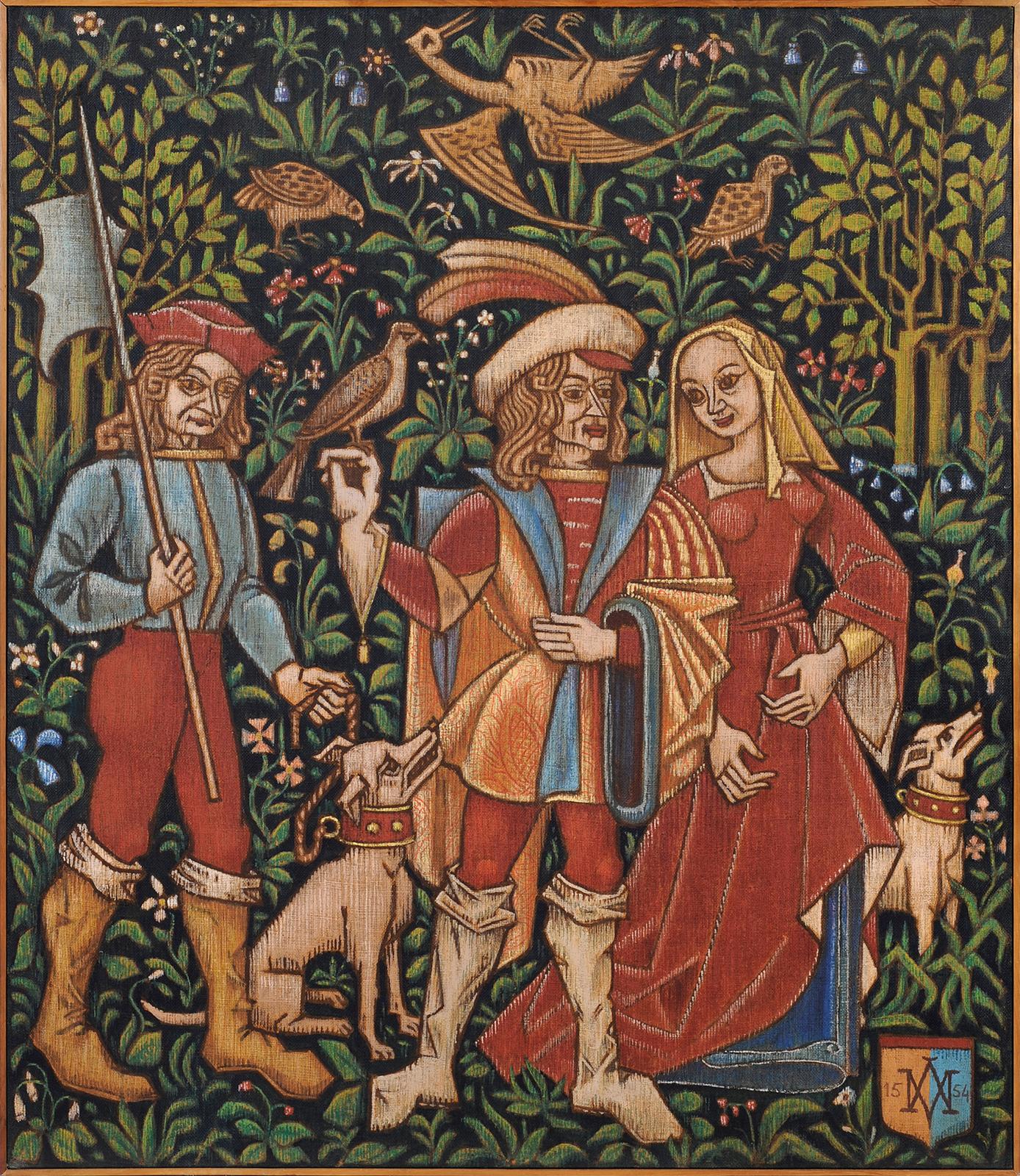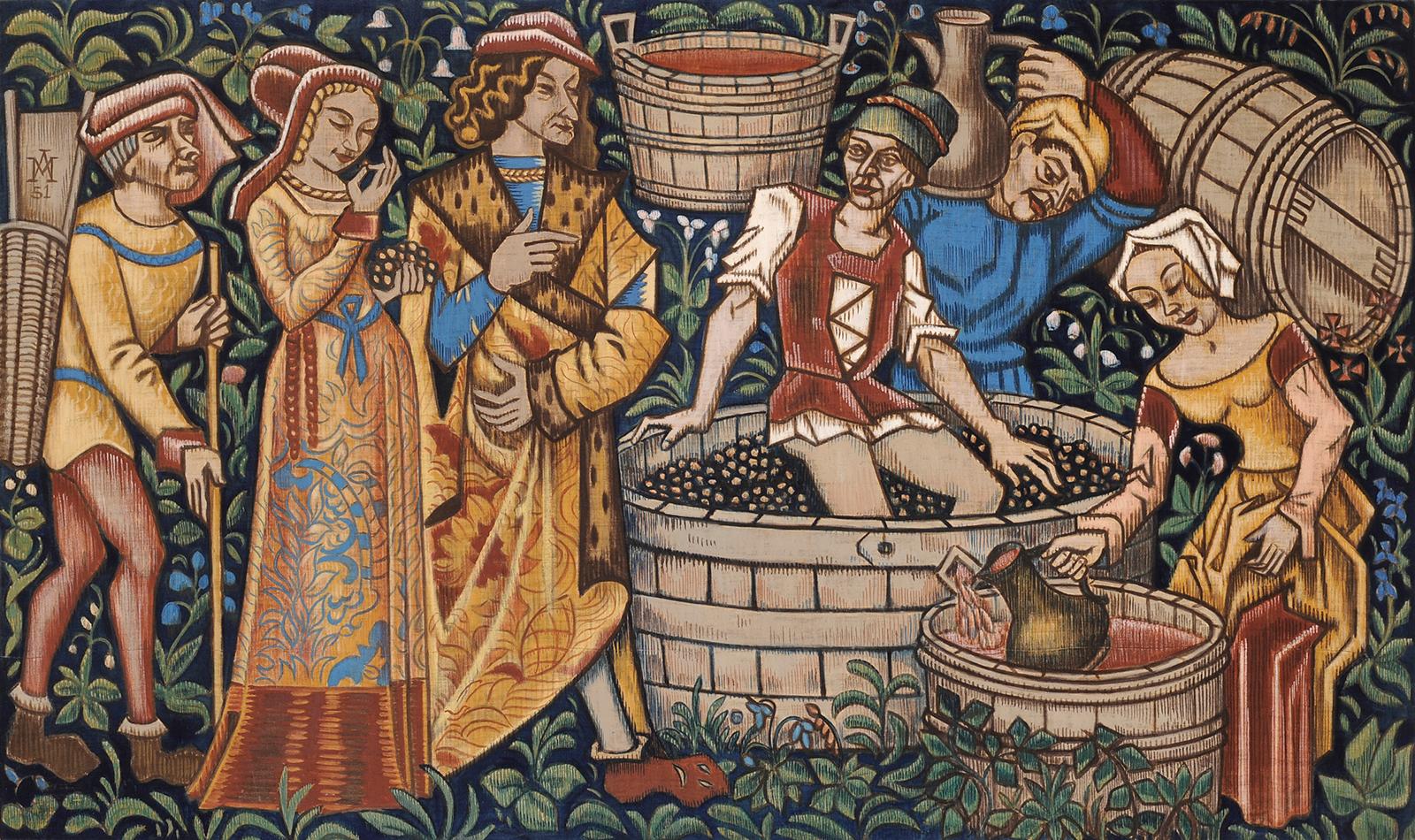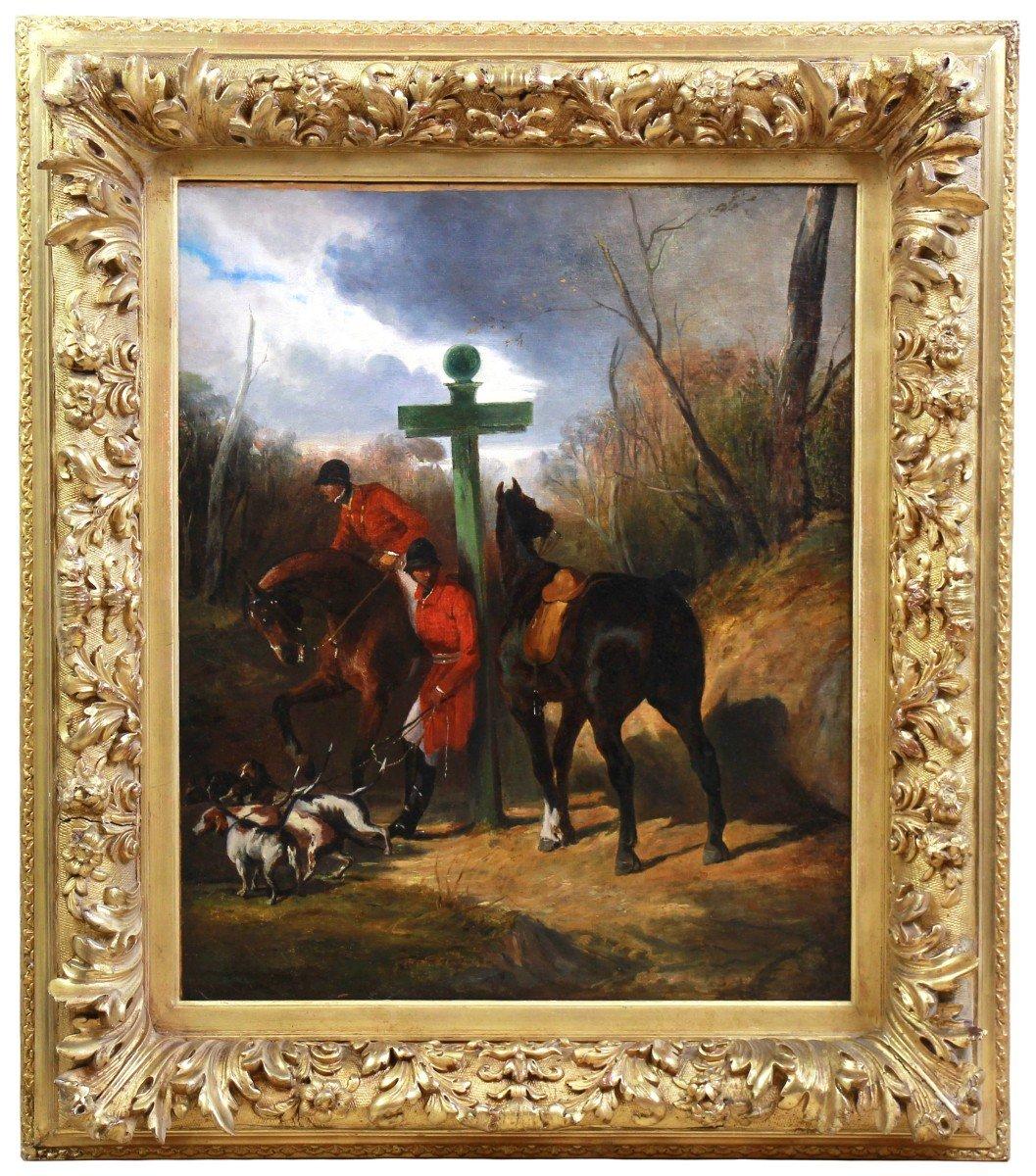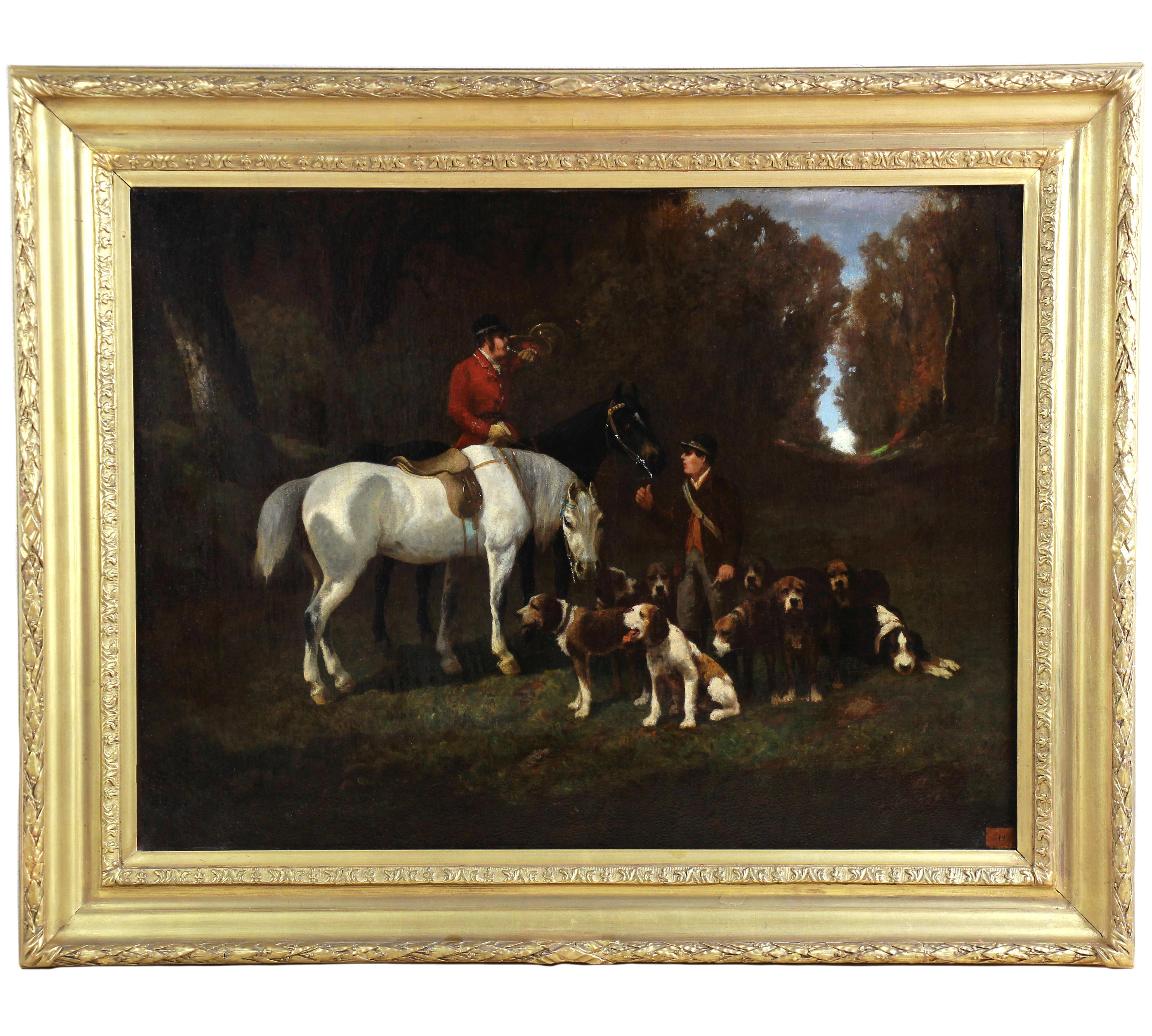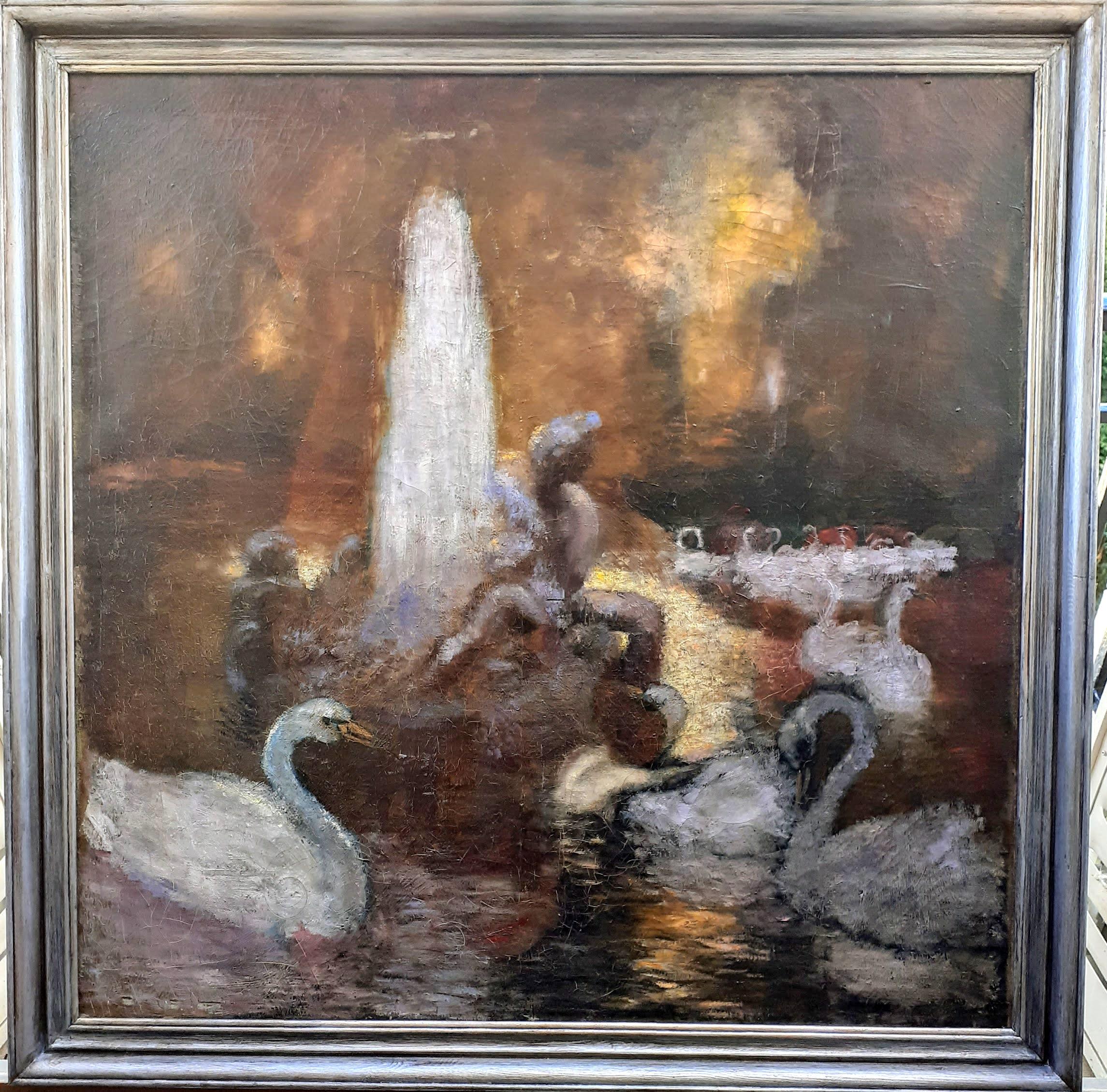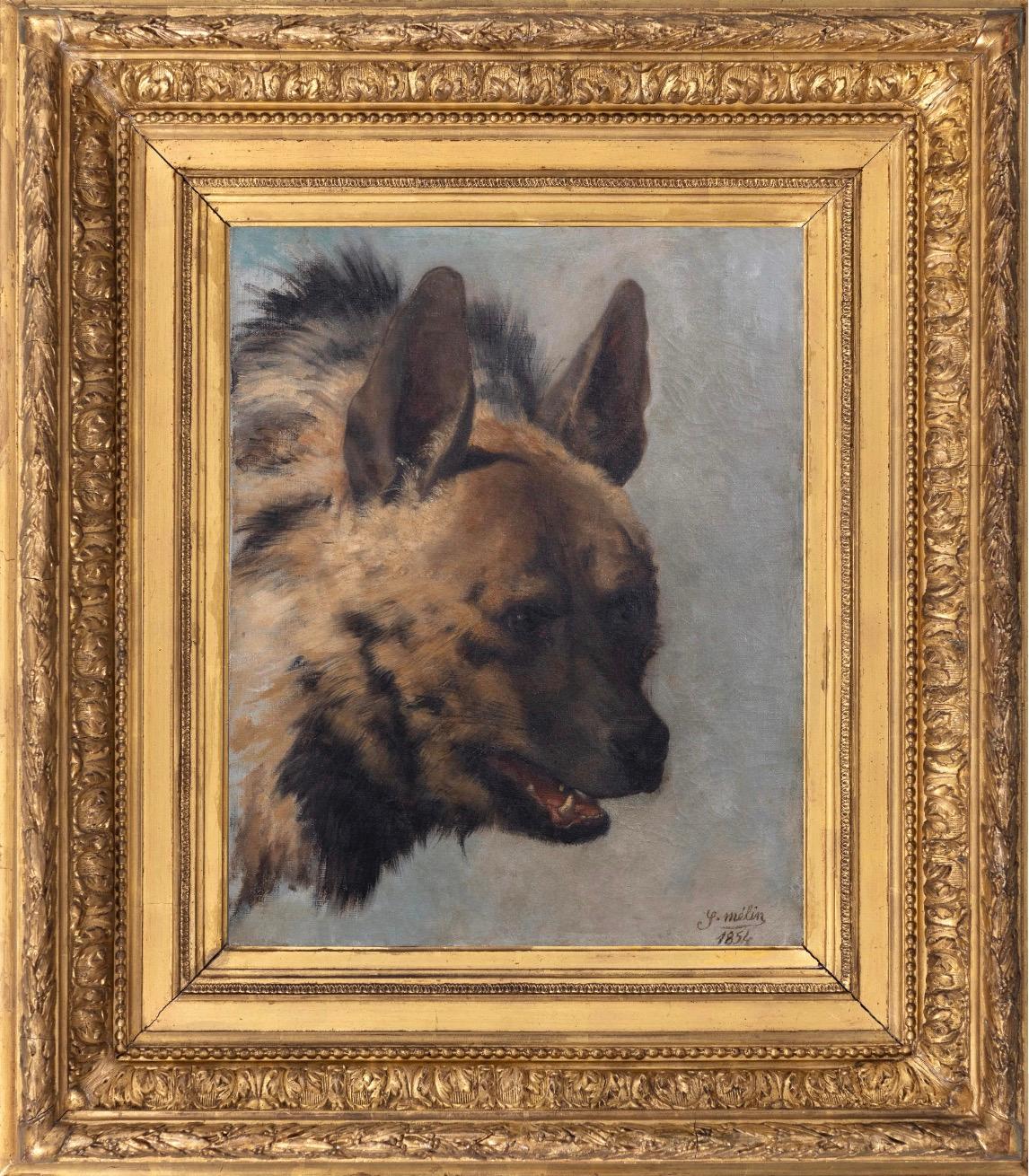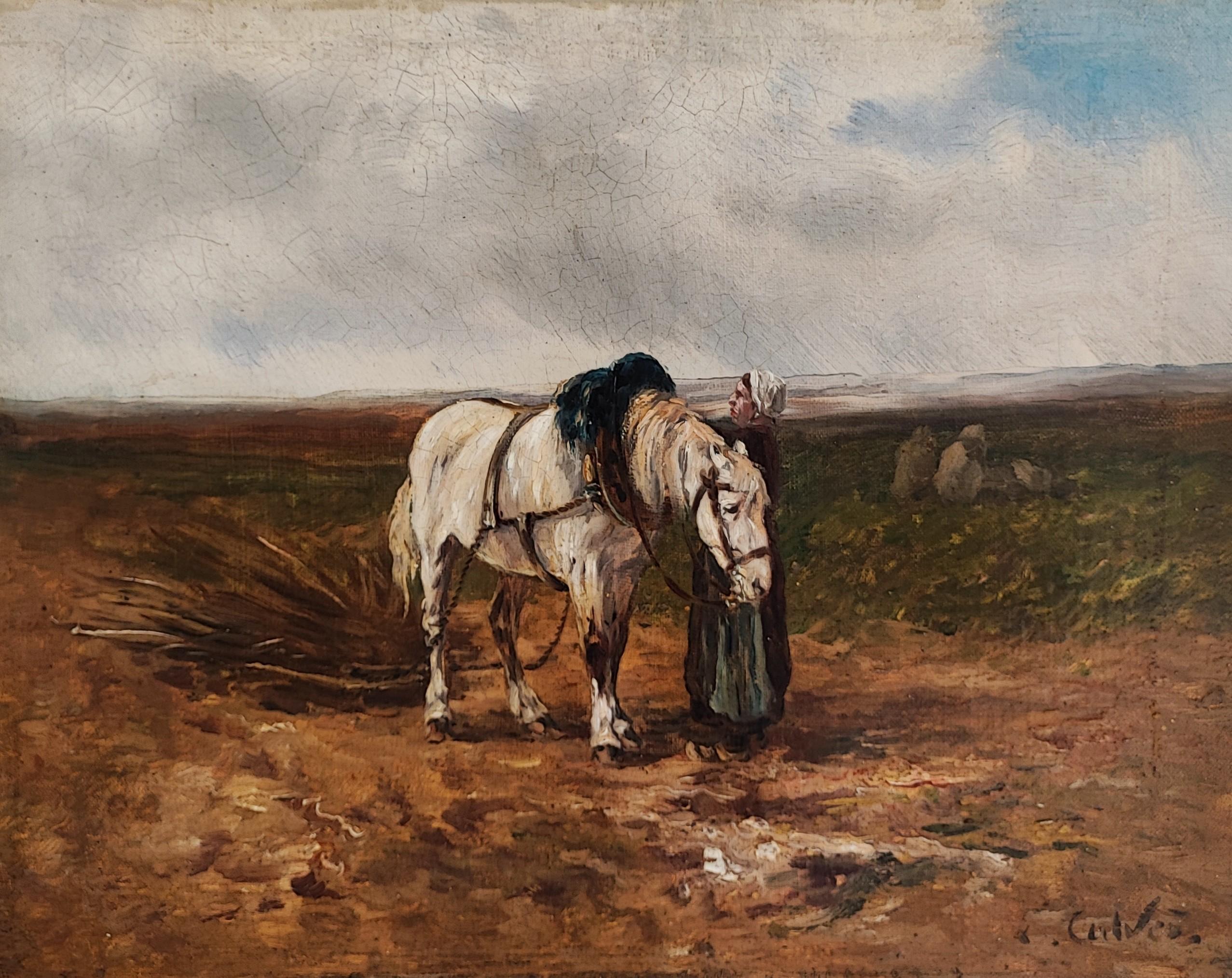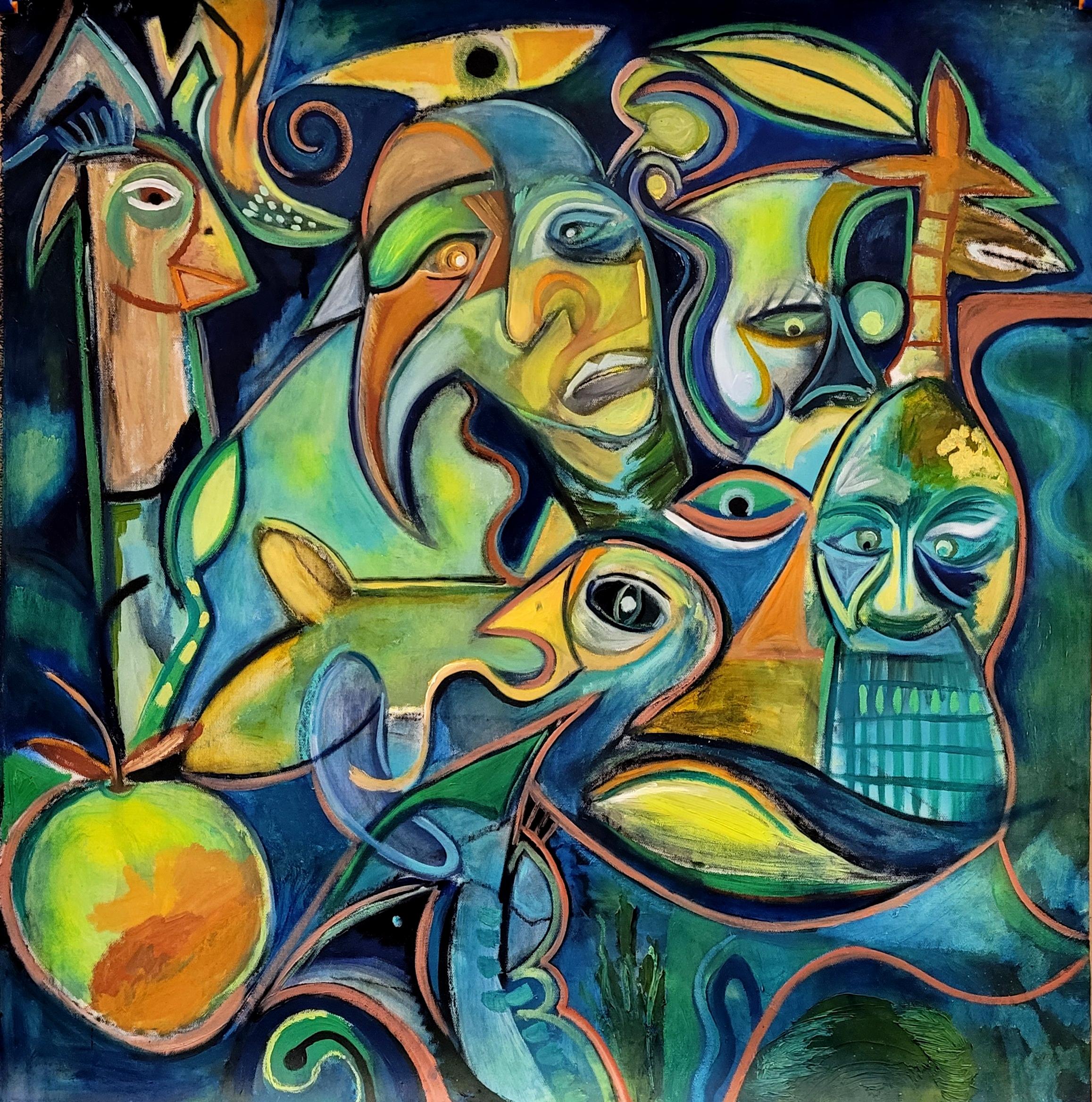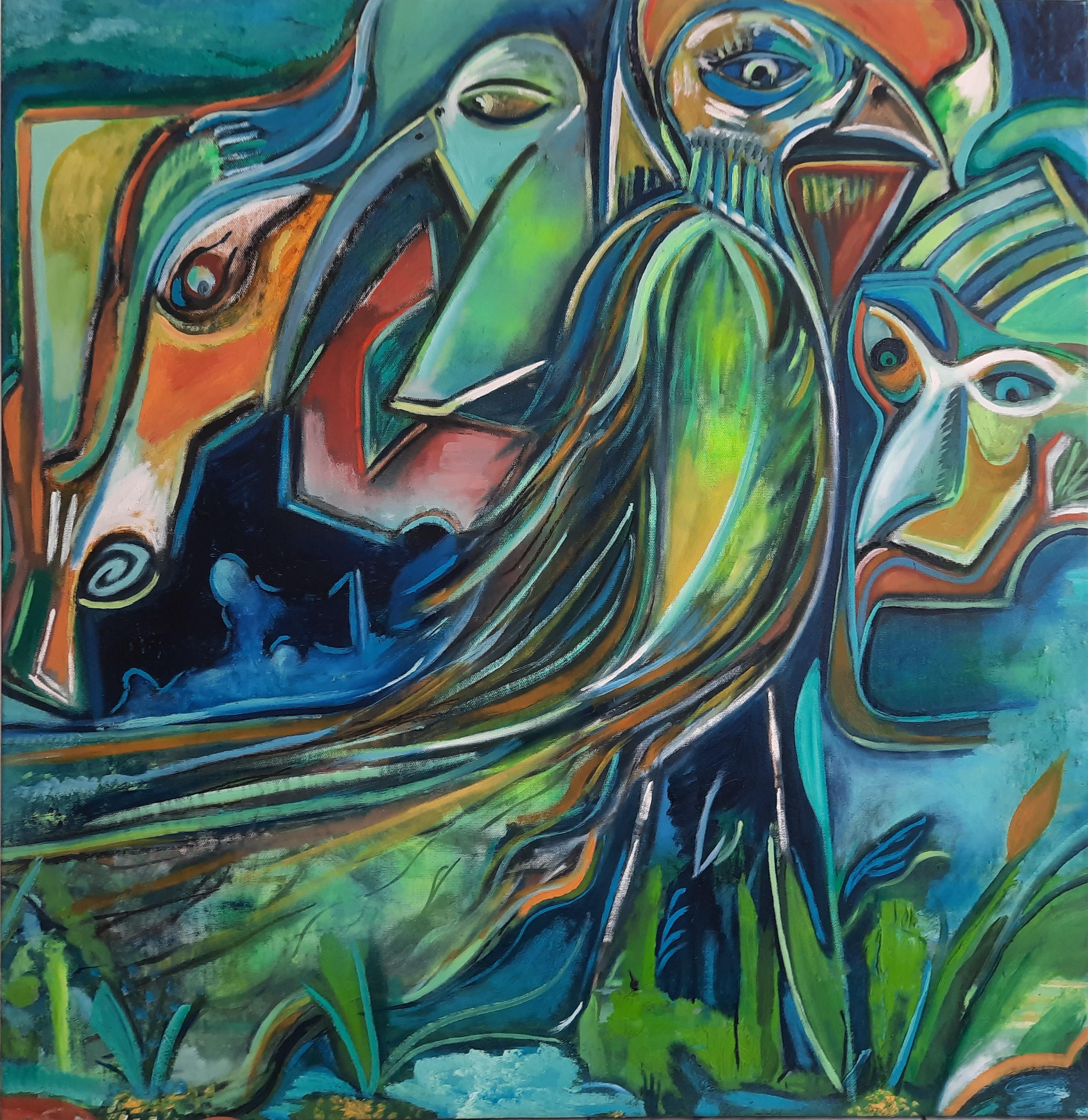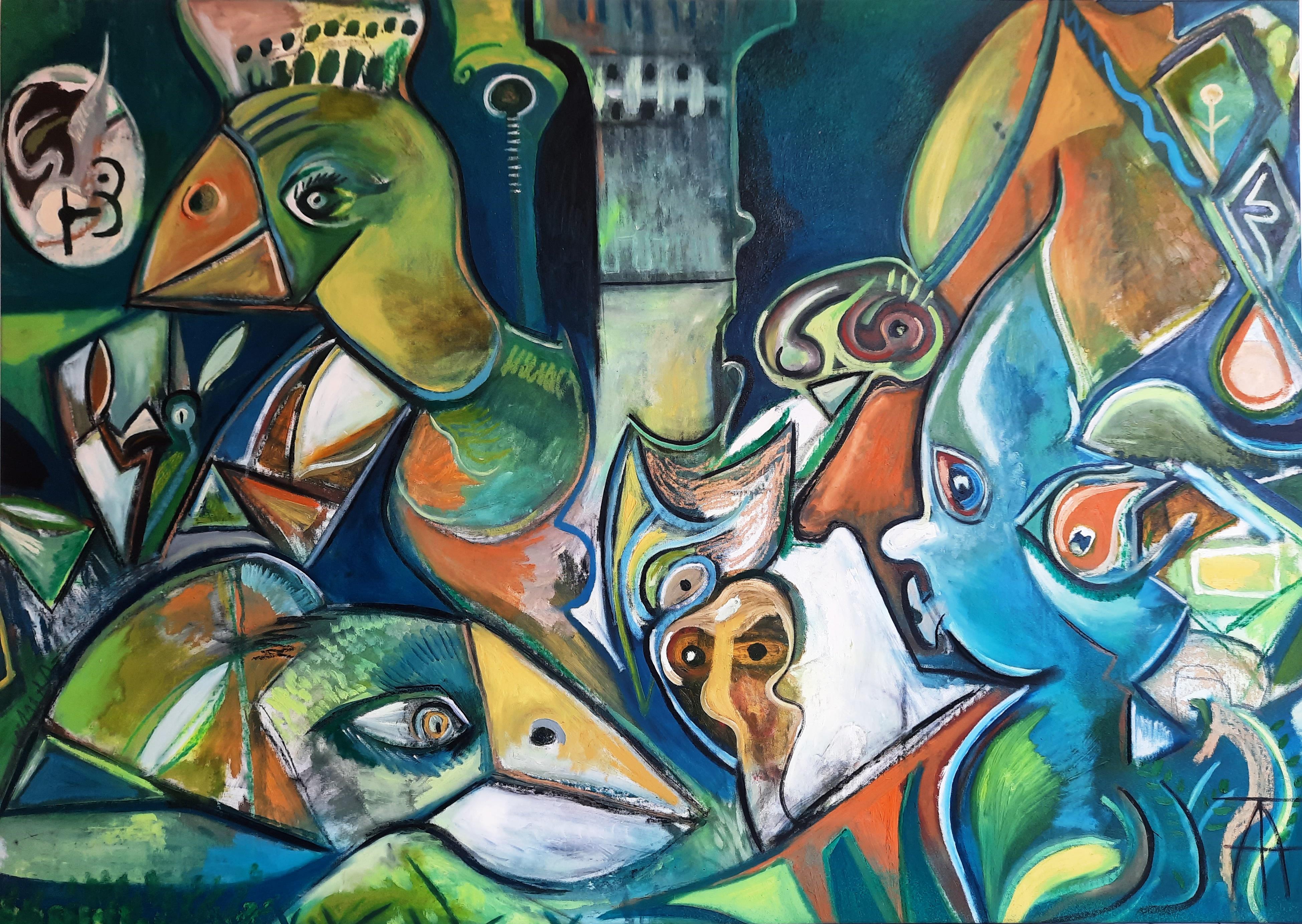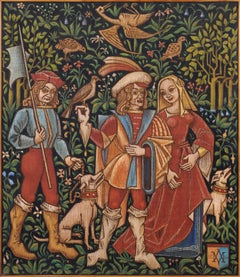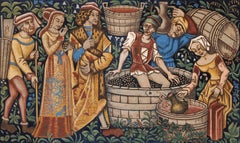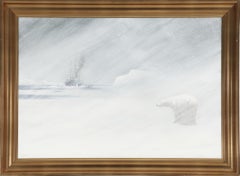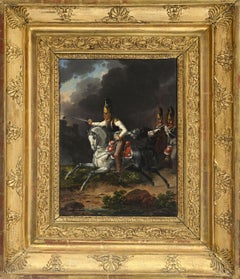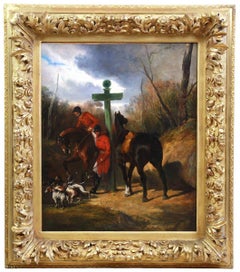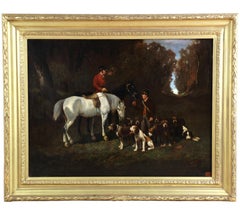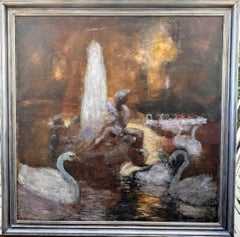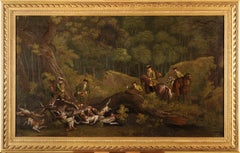
French school 18th century - Deer hunting scene in France
View Similar Items
Want more images or videos?
Request additional images or videos from the seller
1 of 8
UnknownFrench school 18th century - Deer hunting scene in France18th century
18th century
About the Item
- Creation Year:18th century
- Dimensions:Height: 26.38 in (67 cm)Width: 46.46 in (118 cm)
- Medium:
- Movement & Style:
- Period:
- Condition:
- Gallery Location:BELEYMAS, FR
- Reference Number:1stDibs: LU1857214572702
About the Seller
3.0
Vetted Professional Seller
Every seller passes strict standards for authenticity and reliability
Established in 2017
1stDibs seller since 2022
Typical response time: 5 hours
Authenticity Guarantee
In the unlikely event there’s an issue with an item’s authenticity, contact us within 1 year for a full refund. DetailsMoney-Back Guarantee
If your item is not as described, is damaged in transit, or does not arrive, contact us within 7 days for a full refund. Details24-Hour Cancellation
You have a 24-hour grace period in which to reconsider your purchase, with no questions asked.Vetted Professional Sellers
Our world-class sellers must adhere to strict standards for service and quality, maintaining the integrity of our listings.Price-Match Guarantee
If you find that a seller listed the same item for a lower price elsewhere, we’ll match it.Trusted Global Delivery
Our best-in-class carrier network provides specialized shipping options worldwide, including custom delivery.More From This Seller
View AllFalcon hunt after a 16th century tapestry
Located in BELEYMAS, FR
Maurice ALBE
(Beaugency 1900 - Périgueux 1995)
Falcon hunting, from a 16th century tapestry
Oil on canvas (hessian type)
H. 150 cm; L. 120 cm
Signed and dated lower right 1554 (for 1...
Category
1950s French School Animal Paintings
Materials
Canvas, Oil
The harvest after a 16th century tapestry
Located in BELEYMAS, FR
Maurice ALBE
(Beaugency 1900 - Périgueux 1995)
The grape harvest, from a 16th century tapestry
Oil on canvas (burlap type)
H. 170 cm; L. 100 cm
Signed and dated upper left 51
Proven...
Category
1950s French School Animal Paintings
Materials
Canvas, Oil
Polar bear in a snowstorm in Greenland
Located in BELEYMAS, FR
Emanuel Aage PETERSEN
(1894 - 1948)
Polar bear in a snowstorm
Oil on canvas
H. 70 cm; L. 100 cm
Signed lower left
Emanuel A. Petersen studied to...
Category
Early 1900s French School Landscape Paintings
Materials
Canvas, Oil
Portrait of Russian cuirassiers colonel
By Hippolyte Lecomte
Located in BELEYMAS, FR
Hippolyte LECOMTE
(Puiseaux, 1781 – Paris, 1857)
Colonel of Russian cuirassiers
Oil on canvas
H. 33 cm; W. 24 cm
Signed and dated at the bottom towards the center 1817
Exhibition: S...
Category
1810s French School Animal Paintings
Materials
Oil, Canvas
Portrait of young man - The artist's son
Located in BELEYMAS, FR
Auguste-Joseph Delécluse
(Roubaix 1855 - Paris 1928)
Portrait of the artist's son, Eugène Delécluse
Oil on canvas
H. 98 cm; W. 116 cm
Signed lower right
1903
Exhibition: 1903, Salon...
Category
Early 1900s French School Portrait Paintings
Materials
Canvas, Oil
Presumed artist self-portrait
Located in BELEYMAS, FR
Louis-Gabriel BLANCHET
(Versailles, 1701 – Rome, 1772)
Presumed self-portrait of the artist
Oil on canvas
H. 73 cm; W. 60 cm
Circa 1730
Originally presented in a Restoration period frame with a "Mignard" cartouche, this beautiful painting initially appeared to us as a work from northern Italy. However, it exuded a rather French form of refinement, suggesting that its artist may have assimilated a dual influence from both sides of the Alps.
We thank our colleague and friend Philippe Mendès for spontaneously and judiciously "bringing out" the name of Louis-Gabriel Blanchet, a Romanized French portraitist, whose spirit and stylistic characteristics we clearly recognize here.
Blanchet's "French" years, before his final departure for Rome in 1728, following his winning of the second Grand Prix for painting after Subleyras in 1727, are extremely poorly documented. His father, Gabriel, was valet to Blouin, himself Louis XIV's first valet at the time. According to Thierry Lefrançois, Blanchet was one of the few students of Nicolas Bertin (1667-1736), whose studio he is said to have joined in the early 1720s. At a baptism on March 24, 1724, where he was godfather, he is mentioned as a painter in the picture store of the Duke of Antin, the director of buildings between 1708 and 1736. At this time, he was probably already married to Jeanne Quément, with whom he had a daughter also named Jeanne, who would marry Nicolas Aviet, the son of a valet in the queen's wardrobe, in Versailles in 1738.
When Blanchet arrived in Rome in October 1728, he was accompanied by Subleyras, Trémolières, and Slodtz. He enjoyed the goodwill of Vleughels, the director of the Académie de France, which had been based at the Palazzo Mancini since 1725, even though the latter was not always kind to our resident. From 1732, he was under the protection of the Duke of Saint-Aignan when he took up his post as ambassador to Rome. Along with Slodtz and Subleyras, they formed a trio of friends, joined by Joseph Vernet shortly after his arrival in Rome in 1734. Slodtz and Blanchet, on the occasion of Subleyras's marriage in 1739, were there to attest that their friend was not bound by any marital commitment, and Blanchet was a witness at Vernet's wedding in 1745.
It is most likely from these early years in Rome that our portrait of the artist dates, the expression and turn of his face irresistibly reminiscent of a self-portrait. The still relatively youthful features may correspond to Blanchet's thirty-something years, and the fluffy wig was still fashionable at this time.
The painting fits well with the depiction of a young painter wanting to display both the beginnings of success and a certain simplicity or restraint. A slight smile expresses a form of assurance in this man with a gentle, sincere gaze and a face radiating a keen sense of wit. We find here the air of intimacy present in almost all of Blanchet's portraits, even those from the 1750s and 1760s, as well as an almost complicity with the viewer. The spirit of the painting is quite close to that of the presumed portrait of Bouchardon (painted around 1730) and the portrait of Pannini, painted in 1736, but it possesses a more natural quality, notably thanks to the absence of decorum. Our work exhibits the characteristics of Blanchet's paintings: elegance, luminosity (especially in the whites), vibrant and refined colors (here, the harmony of the garnet of the garment and the slate blue of the background, whose uniformity is tempered by a very sketched landscape and a grove of greenery), light complexions, rather rosy cheekbones, often full lips, and rather tight framing.
According to the Academy's rules, Blanchet's stay should have ended in the spring of 1732, but, for reasons unknown, he remained in the Eternal City until his death, as did his friend Subleyras, with whom he shared accommodation until the late 1730s. The latter regularly called upon him to collaborate on his paintings, such as The Meal at Simon's. Through Saint-Aignan's intervention, Blanchet was employed in the late 1730s by the Stuart princely family, then exiled in Italy. He notably produced copies (now lost) after Liotard of the portraits of Charles Edward and Henry Benedict, the sons of James III Stuart. The latter also commissioned three other portraits (now in the National Portrait Gallery in London), whose more formal character contrasts with the intimate spirit of Blanchet's portraits. Blanchet frequented English painters, such as the landscape painter Richard Wilson, and studied with the Scottish portraitist Katherine Read...
Category
1730s French School Portrait Paintings
Materials
Oil, Canvas
You May Also Like
Oil on canvas “hunting scene with dogs” circle of Alfred De Dreux 19th century
By Alfred de Dreux
Located in Gavere, BE
Two hunters, one leaning against the cross and dogs on the left "halt in the forest"
Oil on canvas, restored and cleaned in good condition.
Very nice painting for hunting scene art...
Category
1850s French School Animal Paintings
Materials
Gold Leaf
Oil painting“hunting scene with dogs and horse” circle of Alfred De Dreux 19th
By Alfred de Dreux
Located in Gavere, BE
Oil painting“hunting scene with dogs and horse” attr. to Alfred De Dreux 19th
Oil on canvas, restored and cleaned in good condition.
Very nice painting for hunting scene art...
Category
1850s French School Animal Paintings
Materials
Gold Leaf
Swan Lake: large art deco period French post impressionist landscape painting
By Marius Petit
Located in Norwich, GB
A stunning and atmospheric painting by Marius Petit (1882-1960). It dates from the 1920s, the height of the art deco period. Glorious, scintillating and beautifully coloured; it is a...
Category
Early 20th Century French School Figurative Paintings
Materials
Canvas, Oil
Working Horses At The Trough 1908 Chevaux À L'Abreuvoir French Rural Normandy
Located in Sutton Poyntz, Dorset
Raimond Louis Lecourt
French ( b.1882 - d.1946 ).
Chevaux À L'Abreuvoir, 1908. (Horses At The Trough).
Oil On Canvas.
Signed & Dated 1908 Lower Left.
Image size 14.2 inches x 17.3 in...
Category
Early 20th Century French School Animal Paintings
Materials
Canvas, Oil
Hyena head
Located in Paris, IDF
Joseph Urbain MÉLIN
(Paris, 1814 – Avon, 1886)
Hyena head
Oil on canvas
Signed and dated lower right
40,5 x 32 cm without frame
65 x 57 cm with frame
1854
Born in Paris on Februar...
Category
Mid-19th Century French School Animal Paintings
Materials
Oil
Woman in the field preparing a draft horse
By Leon Georges Calves
Located in Genève, GE
Work on canvas
Category
19th Century French School Figurative Paintings
Materials
Oil
Recently Viewed
View AllMore Ways To Browse
Benjamin Herring
Cavalier King Charles Oil Painting
Cocker Spaniel Dogs
Cougar Painting
Dachshund Dog Paintings
Dallas Simpson
Equine Old Masters Paintings
J F Herring
John Bergen
Mary Newcomb
Pug Oil Paint
Ratting Terriers
Roberto Clemente
Sandhill Crane
Scottish Stag Paintings
Springer Spaniel Dog Art
Tatyana Palchuk
Borzoi Painting
